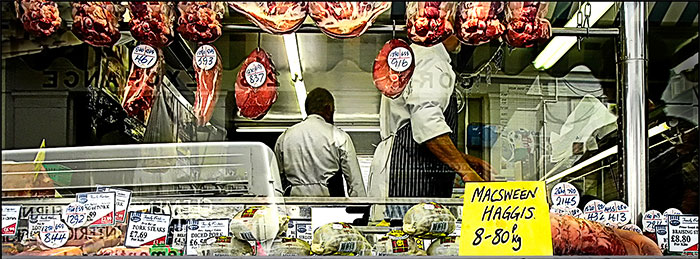
While the very name evokes toe curling in some, devotees of haggis extol its virtues as Robert Burns’ “great chieftain o’ the pudding race!”
It is the Scottish national dish, commonly served with ‘neeps and tatties’, or boiled and mashed turnip and potato.
Along with a dram of whisky, it forms the famous Burns Supper.
This savoury pudding was traditionally made of sheep heart, liver and lungs, tarted up with onion, oatmeal, suet, spices, seasoning and stock, wrapped up in an animal stomach and boiled for about three hours.
Modern haggis tends to come in sausage casing and often substitutes pig for sheep.
Haggis gained fame as a nourishing, calorie-dense meal for poorer Scots, using leftover meat products usually considered undesirable, but in fact similar preparations have been noted in studies of Ancient Rome.
The dish’s actual origins are shrouded in myth but these days the haggis is synonymous with Scotland, consumed to celebrate Burns Night at the end of January, to proclaim Scottishness worldwide and used in the sport of Haggis Hurling.
Modern commercial preparations can be found in every Scottish supermarket, with cheaper varieties made largely from pig rather than sheep and with artificial casing rather than real stomach.
A higher-end variant has become known as the ‘Flying Scotsman’, comprising chicken breasts stuffed with haggis, while variations on the theme abound.
While squeamish Southerners are known to turn their nose up at the haggis, Scots are proud of their traditional fare and for those who can put their prejudices aside, the 2001 Larousse Gastronomique commends the haggis for its “excellent nutty texture and delicious savoury flavour.”
